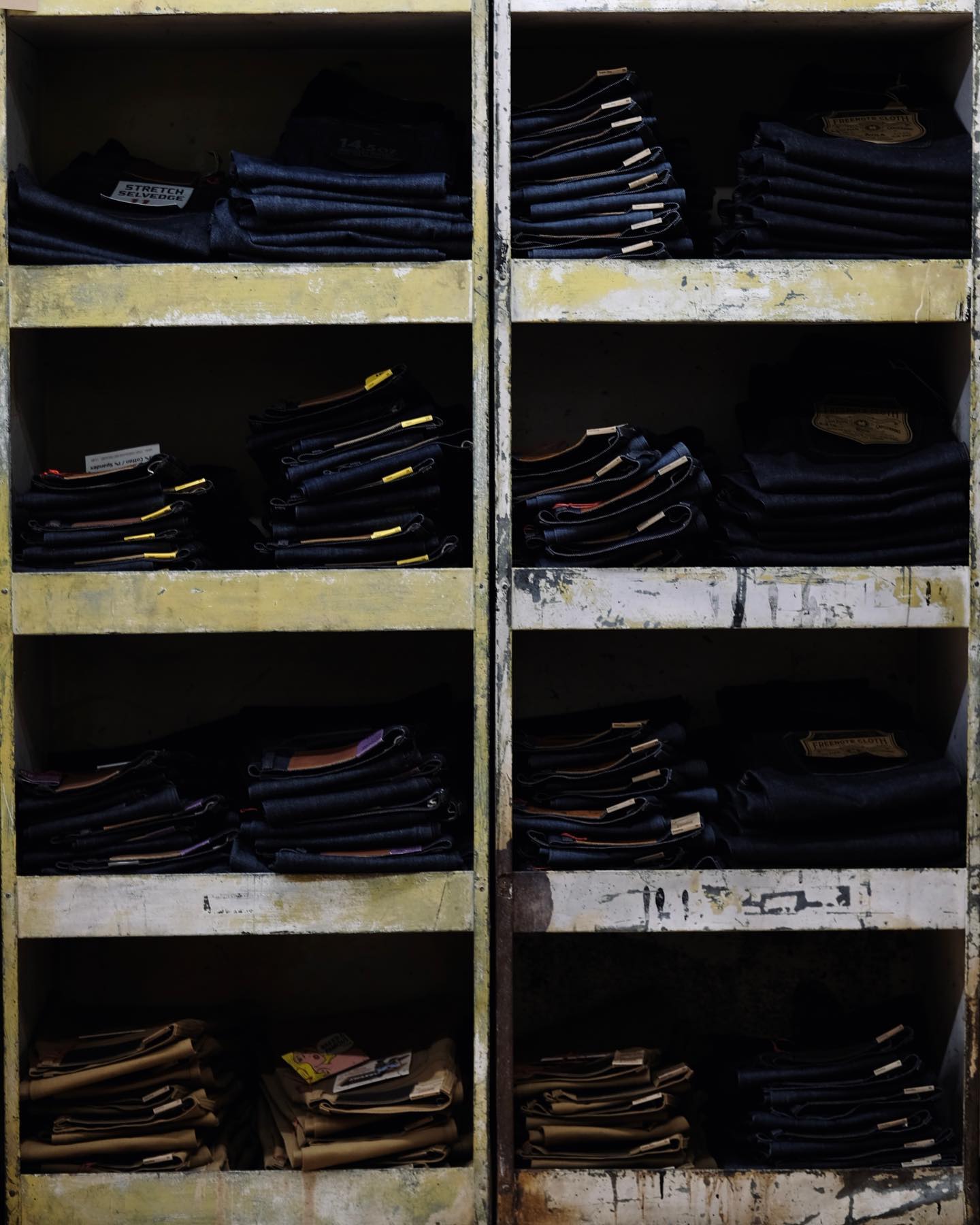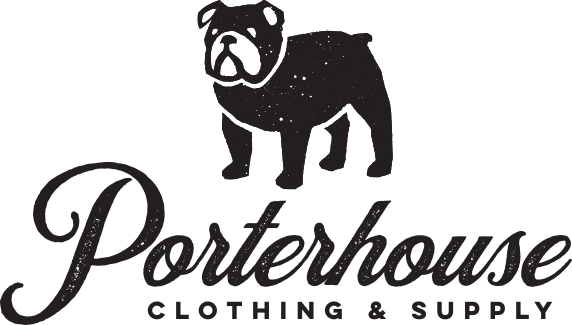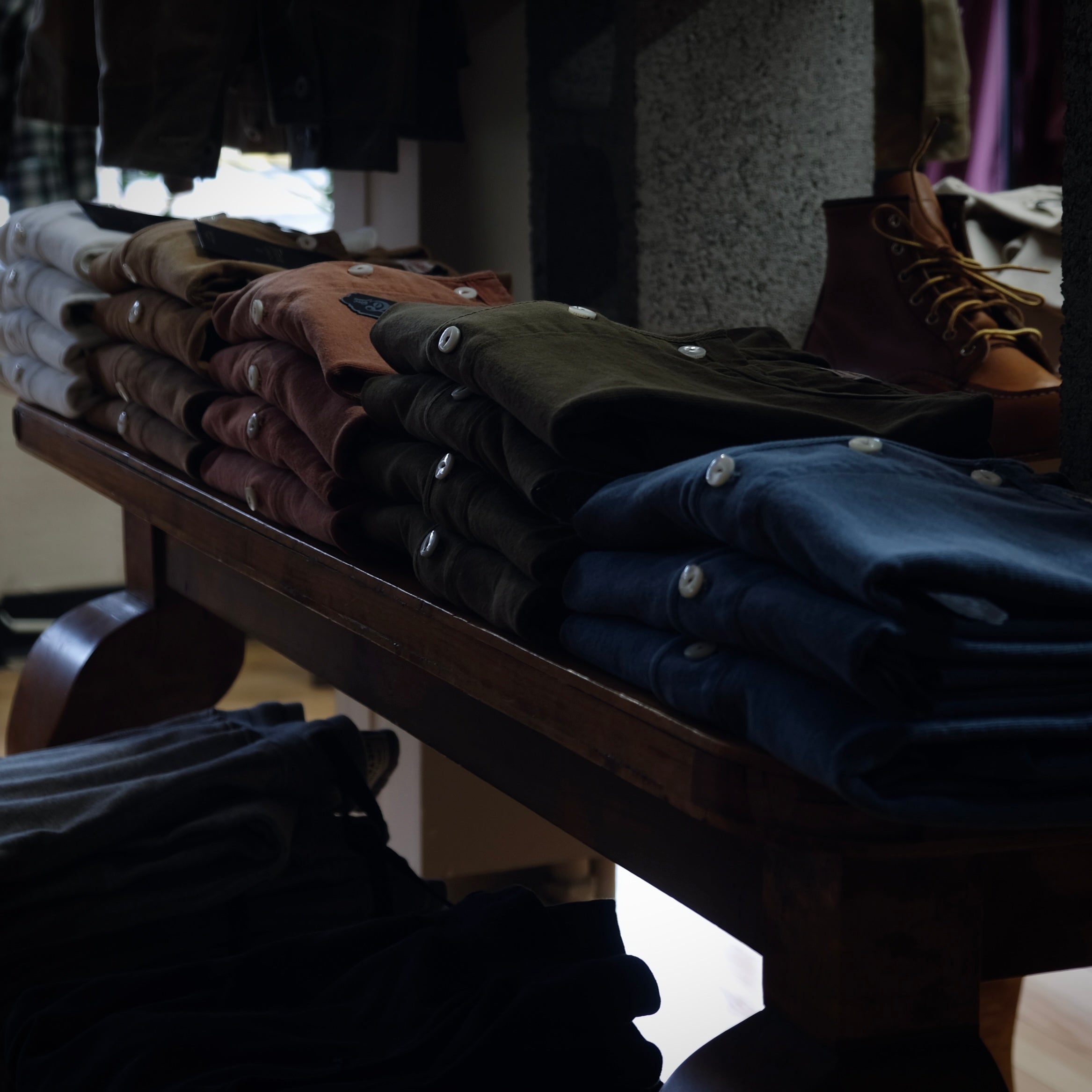Natural Materials
If you browse the right clothing racks, you're liable to find clothing that is made of, among other things, polyurethane.
You know where else we see things made of polyurethane? On the floor, at Porterhouse. We had the hardwood refinished when we moved in, which included a fresh coat of polyurethane. It's a plastic-based product used for a ton of stuff.
Favoring Natural Materials
Here at Porterhouse, we're generally more interested in natural materials than synthetic ones. Not that synthetic materials don't have their place, and not that there aren't problematic natural materials. But in general, natural materials are more renewable and are capable of some pretty amazing stuff.
Cotton
Cotton is everywhere. And for good reason - it's pretty durable and readily available. Both organic and traditional varieties can be found in the shop. Brands like Taylor Stitch use almost exclusively organic cotton, which requires fewer pesticides and water to grow. Though the various certifications out there for cotton should largely be taken with a grain of salt. The certification boards are sometimes owned by textiles companies themselves, creating a clear conflict of interest.
But we won't fault folks for trying.
Linen
We love linen in the summertime. Linen is very light, yet surprisingly strong. The tradeoff is a less uniform appearance, being prone to wrinkles, and being a bit itchy until you break it in.
Wool
Wool is warm and has natural moisture wicking properties. Dehen 1920 makes some of the best heavyweight wool stuff out there.
There are lots of kinds of wool. Merino wool is popular in performance-wear like base layers and socks. It's lightweight, moisture-wicking, and antimicrobial thanks to naturally-present lanolin that protects sheep from infection.
Hemp
Don't call it a comeback! Hemp is coming back into fashion in the US as governmental entities get more granular about restrictions on cannabis.
Hemp is eco-friendly from the seed. The hemp plant requires very little water, absorbs a ton of CO2 out of the atmosphere, and restores nutrients to the soil it grows in, making it a popular transition crop for organic farms acquiring formerly non-organic land.
The final product is a bit like linen in its appearance, and once again, very strong.
Ramie
Ramie isn't old, but we don't see a ton of it. We actually only ever got one shirt in made of it. But it was cool, so we're mentioning it here. Ramie is made from nettles. Neat!
Not-Quite-Natural Materials
There's a whole family of fabrics that originate from wood pulp, so they are largely renewable, but their manufacturing process is intensive and chemical-y. This includes fabrics like rayon, modal and viscose.
Then lyocell came along, manufactured almost exclusively by a company called Tencel, so you'll often see the names used interchangeably (like Kleenex and "facial tissue"). Lyocell is the same idea - dissolved eucalyptus - but the manufacturing process has been greatly improved and is advertised as closed-loop, reusing all the chemicals in the manufacturing process.
Synthetics Have Their Place
Synthetic materials can be very strong, wrinkle-resistant, and cheap. Usually a good fit for performance materials.
A Word on Recycled Materials
There's a movement to use more recycled synthetics, but a lot of this is simply marketing fluff. The process to reuse these materials is far from eco-friendly, so take claims about reusing water bottles and recycling polyester with a grain of salt.
And even if we get good at recycling some of these materials, recycle is the last item in the "Reduce, Reuse, Recycle" methodology. For more on reducing, hop over to our write up on what we look for in the clothes we stock here at Porterhouse, and how that compares to the average American's clothing buying habits.


